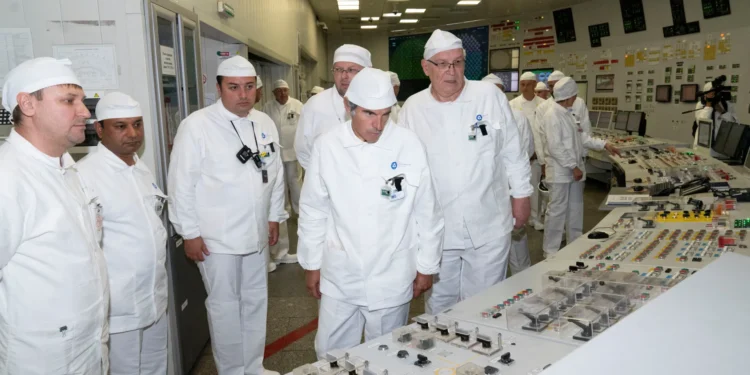As the conflict between Russia and Ukraine continues to escalate, the international nuclear watchdog has sounded a dire warning about the safety of a nuclear power plant in western Russia. The International Atomic Energy Agency (IAEA), the United Nations’ nuclear watchdog, has expressed grave concerns over the Kursk Nuclear Power Plant’s proximity to the ongoing hostilities. This development has brought the potential for nuclear catastrophe to the forefront of global attention, underscoring the far-reaching implications of the conflict.
The Kursk Nuclear Power Plant: A Vulnerable Target
On August 27, 2024, IAEA Director General Rafael Grossi conducted a crucial visit to the Kursk Nuclear Power Plant, located outside the town of Kurchatov in Russia’s Kursk region. The timing of this visit was particularly significant, as it came just three weeks after Ukrainian forces had made a daring incursion across the border into Russian territory. The plant’s location, now perilously close to an active combat zone, has raised alarm bells among nuclear safety experts worldwide.
During his inspection, Grossi highlighted a critical vulnerability in the plant’s design. Unlike modern nuclear facilities, the Kursk plant lacks a robust containment dome – a crucial safety feature designed to shield the reactor from external threats. This absence leaves the facility dangerously exposed to potential attacks from various sources, including missiles, drones, and artillery fire.
The Nuclear Watchdog Concerns
The IAEA’s concerns stem from the specific design of the Kursk plant. It utilizes an RBMK-type reactor, the same model involved in the catastrophic Chornobyl disaster of 1986. This reactor type is particularly vulnerable due to its construction, with the core containing nuclear material protected by little more than a standard roof. Grossi emphasized the extreme fragility of this setup, stating that even a single artillery impact, drone strike, or missile could have devastating consequences.
The nuclear watchdog’s warnings are not merely speculative. Grossi reported being shown evidence of recent drone impacts on the facility, though he refrained from attributing responsibility for these attacks. This revelation has only intensified the IAEA’s calls for immediate action to safeguard the plant and prevent any potential nuclear incidents.
Escalating Tensions and Accusations
The situation surrounding the Kursk Nuclear Power Plant has become a focal point of accusations between Russia and Ukraine. Russian President Vladimir Putin has publicly accused Ukrainian forces of attempting to attack the facility, a claim that has yet to receive a formal response from Kyiv. These allegations have further heightened tensions in an already volatile region, with both sides aware of the catastrophic consequences a nuclear incident could have on the course of the conflict and beyond.
The IAEA has consistently warned about the dangers of military activities near nuclear installations since Russia’s full-scale invasion of Ukraine began in February 2022. The current situation at the Kursk plant represents a dangerous escalation of these risks, with active combat taking place in close proximity to a vulnerable nuclear facility.
The warnings issued by the UN nuclear watchdog regarding the Kursk Nuclear Power Plant serve as a stark reminder of the unforeseen dangers that can arise in times of conflict. The IAEA’s concerns highlight the urgent need for all parties involved to prioritize nuclear safety, regardless of military objectives. As the situation continues to evolve, the international community must heed these warnings and work towards a resolution that ensures the safety of nuclear facilities and prevents the possibility of a catastrophic incident that could have far-reaching consequences for the region and the world at large.
Related News
















